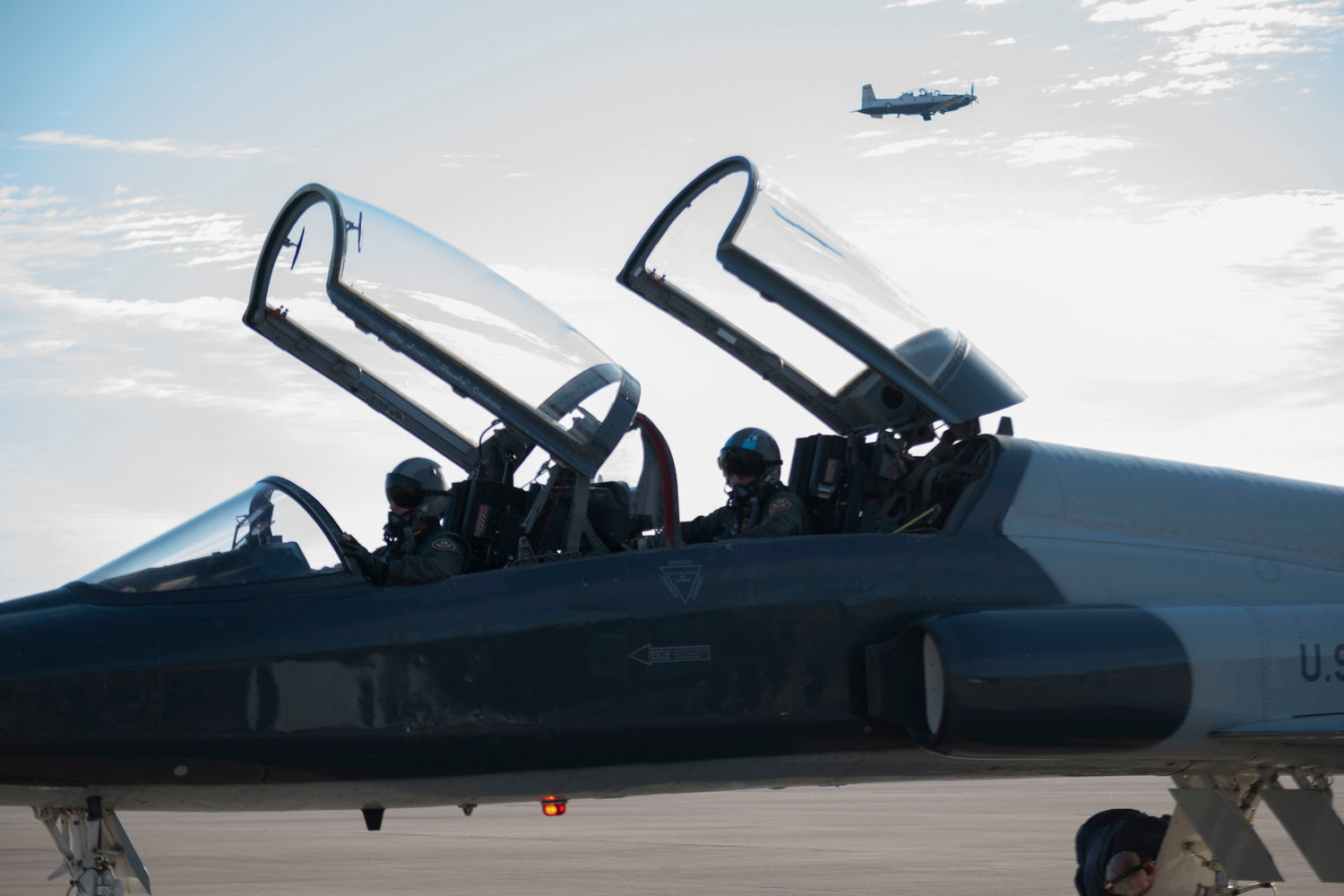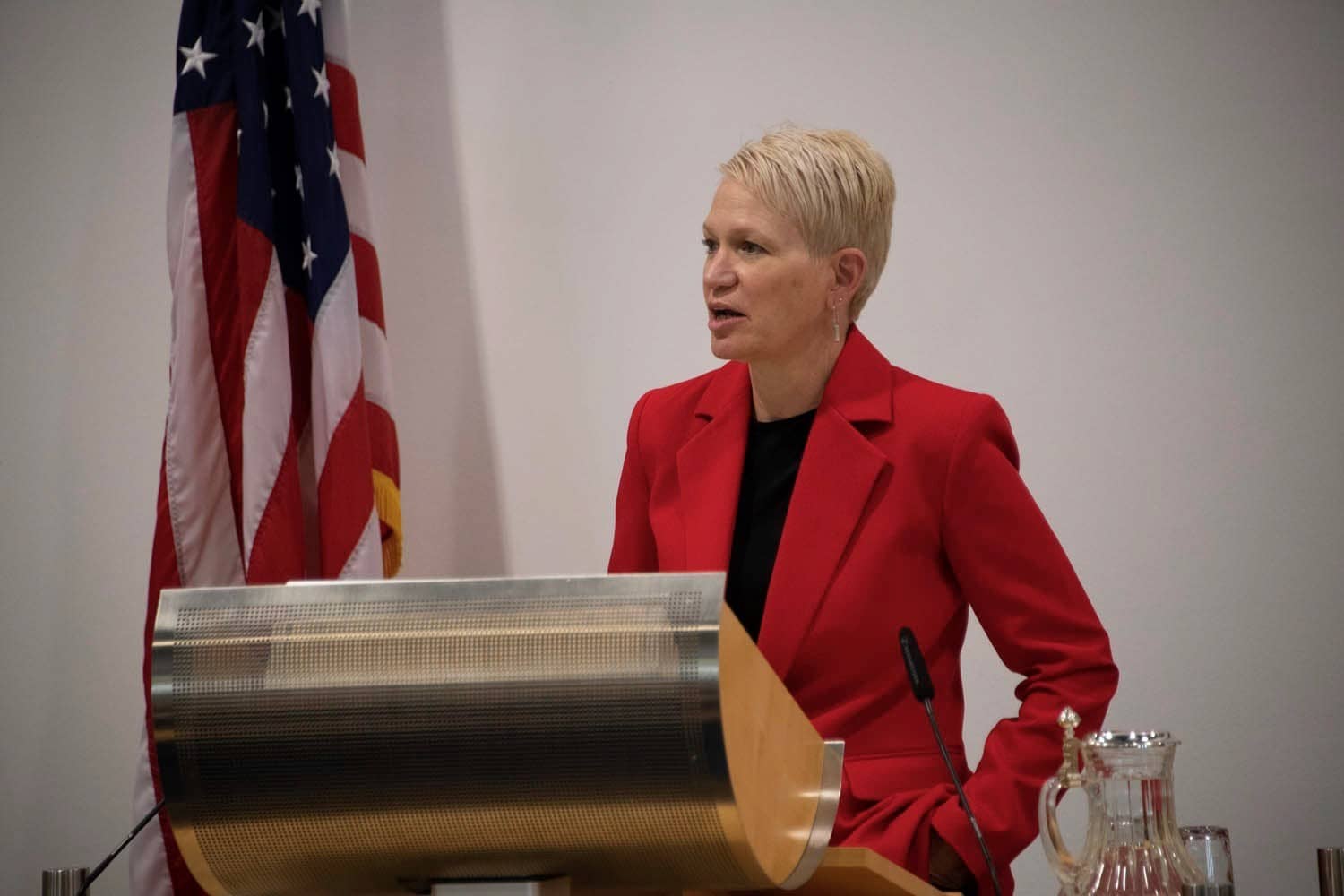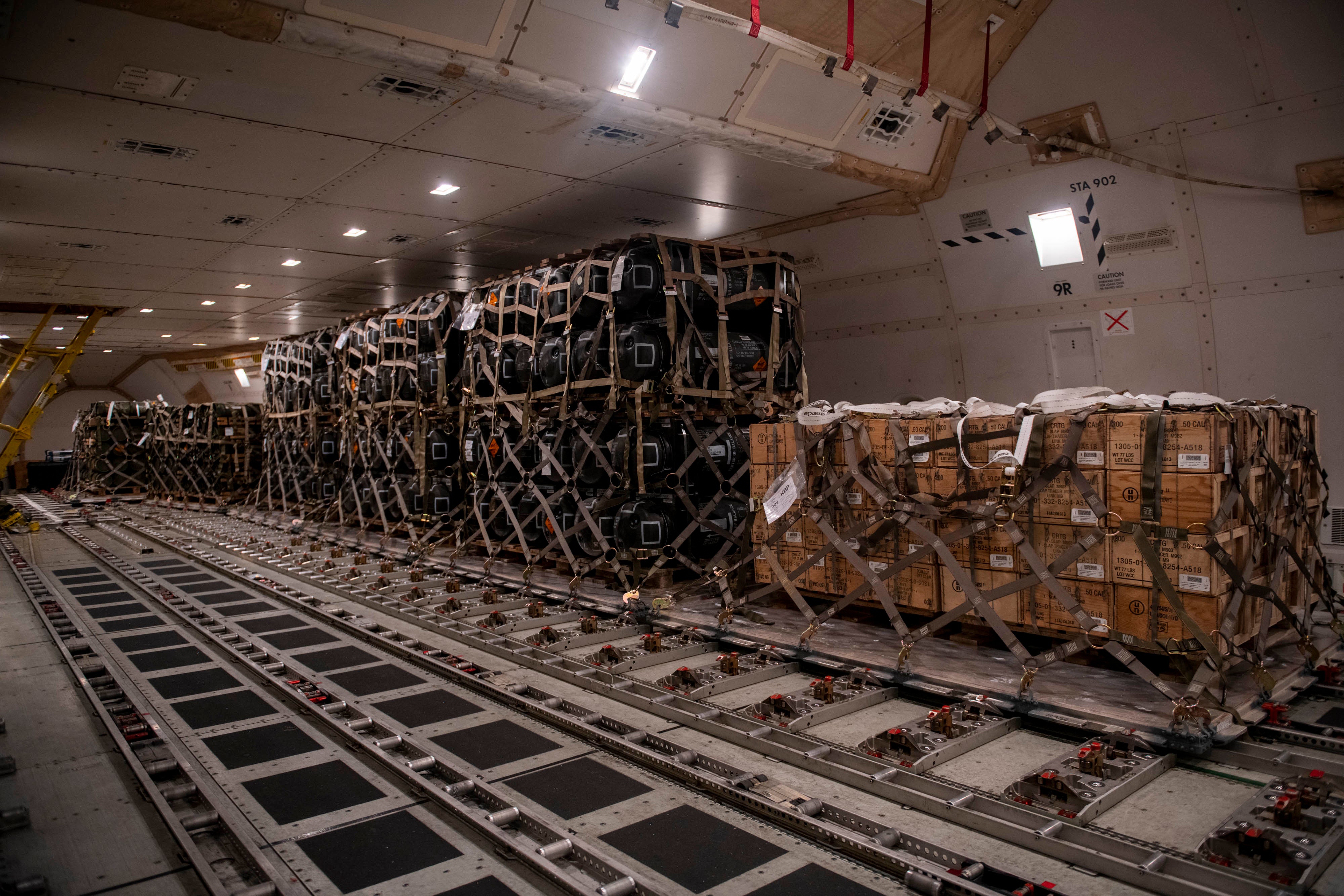U.S. Air Force Maj. Gen. Phillip Stewart, 19th Air Force commander, prepares to deplane a T-38C Talon on the flight line at Laughlin Air Force Base, Texas, Oct, 4, 2022. Stewart visited Laughlin to learn how its multi-capable Airmen are working to streamline Undergraduate Pilot Training and enhance its mission of producing the world's best pilots. (U.S. Air Force photo by Airman 1st Class Kailee Reynolds)
In a landmark announcement at the Air Force Association's 2024 Warfare Symposium, Air Force Chief of Staff Gen. David W. Allvin, alongside senior Air Force officials, unveiled a comprehensive blueprint for transformation aimed at fortifying the United States Air Force (USAF) in the face of escalating global power dynamics. This strategic pivot, characterized by a series of twenty-four pivotal changes, underscores a deliberate shift towards enhancing readiness, technological prowess, and dynamic power projection to counter the sophisticated challenges posed by formidable adversaries like China and Russia.
At the heart of this transformative agenda is the revival of the warrant officer rank within the cyber and information technology sectors, a move that Gen. Allvin believes will significantly bolster the USAF's technical leadership capabilities. This decision, among others, is not merely an organizational adjustment but a strategic recalibration designed to harness specialized talent in areas critical to national security and technological superiority.
Secretary of the Air Force Frank Kendall articulated the urgency of modernization in the context of the evolving threat landscape, where adversaries are rapidly advancing their capabilities. Kendall's remarks highlight a recognition that modernization, while indispensable, is just one facet of a multifaceted strategy required to sustain competitive advantage in an increasingly contested global arena. The outlined changes span across the Department of the Air Force, touching upon the Air Force and the Space Force, indicating a holistic approach to readiness and capability development.
This initiative to reintroduce warrant officers, a practice discontinued in the late 1950s, is particularly notable for its focus on the cyber and information technology fields. This move is predicated on the understanding that the pace of technological advancement demands a cadre of dedicated professionals who can remain at the forefront of innovation and cyber warfare. Gen. Allvin's emphasis on creating a conducive environment for those who aspire to "code for their country" reflects a nuanced approach to talent recruitment and retention, recognizing the unique motivations and career aspirations of individuals in highly specialized fields.
The shift towards larger-scale, comprehensive exercises represents a significant departure from the more localized training paradigms of recent decades. This strategic realignment, aimed at preparing the Air Force for complex, multi-domain operations, underscores the anticipation of high-end conflict scenarios. By institutionalizing these large-scale exercises, the Air Force is not only enhancing its operational readiness but is also fostering a culture of integrated, joint-force collaboration essential for future warfare.
The Space Force, under the leadership of Chief of Space Operations Gen. B. Chance Saltzman, is concurrently undergoing a paradigm shift, recalibrating its readiness standards to reflect the realities of a contested space domain. This transition from a benign to a contested operational environment necessitates a comprehensive overhaul of training, personnel composition, and tactics. Saltzman's focus on advanced training and the development of a robust training infrastructure speaks to the Space Force's commitment to maintaining space superiority in the face of adversarial challenges.
Additionally, the establishment of the Air Force Integrated Capabilities Office marks a strategic initiative aimed at streamlining capability development and resource prioritization across the Department of the Air Force. This organizational innovation is poised to facilitate a more integrated approach to modernization investments, breaking down silos and enhancing the department's agility in responding to operational imperatives.
These sweeping changes, as announced by senior Air Force and Space Force officials, represent a forward-looking strategy aimed at repositioning the USAF and Space Force to effectively navigate the complexities of great power competition. By focusing on people, readiness, power projection, and capability development, the Air Force is laying the groundwork for a future in which technological superiority, strategic agility, and operational readiness are central to maintaining the United States' competitive edge on the global stage.
As the USAF embarks on this ambitious journey of transformation, the reintroduction of the warrant officer rank within the cyber and information technology realms stands out as a pivotal move towards cultivating a workforce equipped to meet the challenges of tomorrow. This, coupled with the enhanced focus on large-scale exercises and the strategic recalibration of the Space Force, signals a comprehensive effort to ensure that the Air Force remains at the cutting edge of military innovation and readiness. In an era defined by rapid technological advancement and shifting geopolitical dynamics, these changes are not just timely but essential for safeguarding national security and sustaining global leadership in the 21st century.




